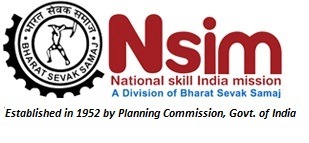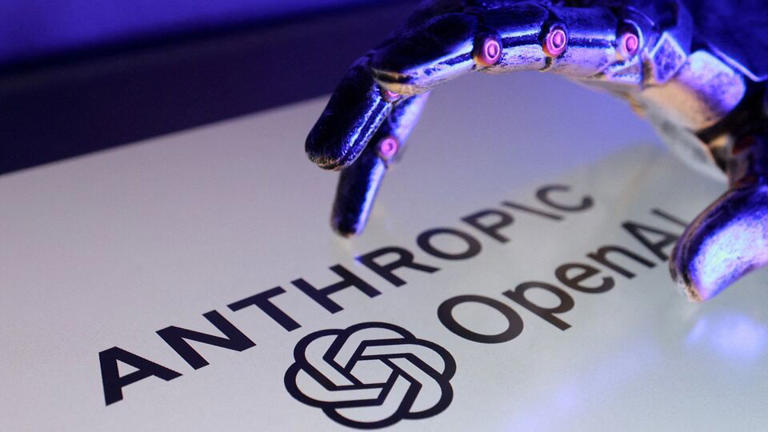Stories you may like
What Is Clay AI?
Clay AI is a data enrichment and automation tool that helps you pull in lead data from different sources (like LinkedIn, company websites, and CRMs), run that data through AI workflows, and turn it into something useful, (like a personalized email, LinkedIn message, or sales note). Think of it as a smarter spreadsheet that can write copy, find missing contact info, and research companies—all without leaving the tool.
It’s built with no-code functionality, which means you don’t need to know how to code to use it. Users set up "Clay tables" (similar to spreadsheets), connect data sources or APIs, and apply actions like enrichment, filtering, or generation using GPT-based models. This leads to more personalized outreach with less manual work.
Key Features of Clay AI
Here are some of the platform's most useful features for marketing professionals:
- Data Enrichment: Pulls in firmographic and contact data from tools like Clearbit. This helps you build rich profiles for your leads without jumping between tabs.
- AI Writing with GPT-4: Write personalized emails, social messages, or product pitches by combining AI prompts with the lead data in your table. The tool supports OpenAI, but also lets you connect your own API keys.
- Workflow Automation: Apply if/then logic to trigger AI prompts, clean data, or segment lists. This works especially well for scaling outreach campaigns.
- LinkedIn and Web Scraping: Automatically pulls data from public LinkedIn profiles or company websites (like job listings, press mentions, or funding news) to help with personalization.
- CRM Integrations: Connects with tools like HubSpot, Salesforce, and Pipedrive, so your qualified leads can be pushed directly to your CRM.
- Built-in APIs and Zapier Support: Allows you to connect external data or run your own API calls, which adds a lot of flexibility for teams already working with custom tools.
Handy Functions
Clay AI is used most often in outbound sales and lead generation, but it’s also gaining traction among marketing teams looking to use AI in more strategic ways. Let's take a look at some specific use cases:
1. Personalized Cold Outreach
Sales reps can use Clay to automatically generate custom emails or LinkedIn DMs based on job changes, company news, or tech stack info. It saves hours of research time.
2. Account-Based Marketing (ABM)
Clay can pull in signals like funding rounds, open job roles, or hiring activity, perfect for building high-quality ABM campaigns. It helps you decide which accounts to prioritize and what message to send.
3. Lead Scoring
By combining data from multiple sources, Clay can help you build smarter lead scoring models. For example, if a company just raised a Series B and uses a competitor’s product, that’s a strong buying signal.
4. Customer Research
Instead of searching for each prospect manually, Clay can gather info like recent news articles, product launches, or thought leadership content posted by key decision-makers.
How to Use Clay AI
Clay tables work like a spreadsheet, but each row can hold way more than just a name or email. You start by uploading or connecting a list of leads. Then, you choose which data sources or enrichment tools to pull from. After that, you can apply AI actions (like generating a custom email) and create logic that updates or filters data automatically.
What sets Clay apart is how it handles AI prompts. You can create your own prompts, just like you would in ChatGPT, keeping in mind that here they’re tied to specific lead data.
The platform also supports real-time previews, so you can spot-check your AI results before launching anything live. This is helpful because the quality of AI-generated content can vary, especially when your source data is inconsistent or incomplete.
Pros and Cons of Clay AI
Like any tool, Clay AI has its strengths and drawbacks. We've put together a quick overview:
Pros:
- Saves time on lead research and manual personalization
- Highly flexible—works with dozens of tools and APIs
- No coding required, but still useful for technical teams
- Great for outbound campaigns and fast-moving sales teams
Successful go-to-market (GTM) teams need comprehensive, high-quality data, but the process of gathering, validating, and enriching this data is typically fragmented across many tools. This bottleneck slows the pace of sales outreach. Clay(opens in a new window) helps GTM teams scale their outreach by centralizing lead information and enabling personalized messaging.
Clay integrated with GPT‑4 to create Claygent, an AI agent that can research anything. Claygent visits websites to find and summarize relevant information, replicating how sales development researchers operate, but much faster and cheaper. With Claygent, a single person can handle the work of an entire team.
The company has achieved 10x year-over-year growth for each of the past two years, with over 100 thousand users including major customers like Intercom, Verkada and Notion.
Building Claygent: An AI-powered sales research tool using GPT-4
GTM teams often struggle with fragmented data and manual tasks that slow down their outreach efforts. As Kareem Amin, co-founder and CEO of Clay, explains, "All tools before LLMs tried to automate what Sales Development Representatives (SDRs) or Business Development Representatives (BDRs) were doing in terms of research but they would get stuck. Data providers could provide a maximum of 100 data points per company. Engineers were building scrapers but that was finicky and time-consuming.”
Clay recognized that the key to empowering these teams was to aggregate data from multiple sources and automate time-consuming research tasks. They chose to integrate GPT‑4 because it had the best language model on the market and its API documentation had plenty of examples showing tool calling in action.
Optimizing Claygent for efficiency and reliability
Clay built Claygent, an AI web scraper that uses GPT‑4 to understand and extract highly specific information from websites. To make Claygent as efficient as possible, Clay optimizes the number of tokens passed to GPT‑4 and chooses the appropriate model for each use case.
When scraping a website, it would be inefficient to send the whole site to GPT‑4. Instead, Claygent asks GPT‑4 which section of the website is most likely to contain the desired information. For example, GPT‑4 might indicate that SOC-2 compliance information is generally found in the footer. Claygent can then specifically scrape the footer instead of the whole website.
Claygent also uses a binary search approach, where it takes part of a website, checks if the required data is there, and if not, moves to another part. This approach progressively narrows the search space until the required information is found.
Clay selects the most appropriate AI model for each product task to optimize cost. For instance, their AI Formula Generator tool, which allows non-technical users to transform data using plain English instructions and examples, runs on cheaper, smaller versions of models. Clay then reserves the speed and intelligence of GPT‑4 Turbo for other, more complicated tasks.
To ensure the reliability of Claygent’s data, Clay combines information from multiple data providers and uses different models to cross-verify it. By comparing the scraped results with information scraped from other sources, Claygent can assess the trustworthiness and consistency of insights generated by their product.
From campaign ideas to outreach in minutes: Clay's success with GPT-4
Clay's integration of GPT‑4 has led to strong growth and customer success. The company grew revenue 10x for each of the past two years, and grew by 2.5x in the first five months of 2024 alone.
The widespread adoption of Claygent has been a significant driver of this growth. Of Clay’s customers, 30% use Claygent daily, generating an impressive 500,000 research and outreach tasks per day. The impact is undeniable — teams of one or two can achieve results that previously required dozens of engineers.
Clay has seen an entire ecosystem of users, known as Claygencies, or “Clay agencies,” spring up around its product. These customers - often founded by former SDRs - have discovered that they can build comprehensive GTM agencies using Clay, providing services like data enrichment, lifecycle campaigns, search engine optimization (SEO), and more, all from within the Clay platform. With Clay, a team of just one or two people can perform the tasks typically handled by a full agency, significantly enhancing productivity and capacity for human achievement.
Inspiring a new era of AI-driven businesses with Clay
In the future, Clay plans to fine-tune their AI agent for specific verticals, such as finding local fitness gyms, doctors, or nurses. They want Claygent to handle complex requests like “find me all companies that have hired 10 engineers in the last month.” Beyond that, Clay is exploring ways to use signals and triggers to make Claygent more proactive, like detecting when a customer visits a website and generating personalized outreach messages or alerting sales teams to potential opportunities in real time.
Is Clay AI Right for Your Team?
Clay AI works best for marketing and sales professionals who need to personalize outreach at scale. If your team is spending too much time researching leads, copying data from LinkedIn, or trying to stitch together insights from different tools, Clay might be worth exploring.
That said, if your team isn’t running a lot of outbound campaigns or if you don’t have solid lead data to start with, the tool may feel overwhelming. It’s also not meant to replace your CRM or email tool—it’s more of an added layer that helps you get smarter, faster, and more targeted before you hit “send.”
Conclusion
Clay AI isn’t trying to be everything at once—it’s focused on making data enrichment, personalization, and automation easier for growth teams. While it’s not perfect, it gives you the kind of control and flexibility that traditional tools often lack. Whether you’re running cold outreach, building ABM campaigns, or just trying to qualify leads faster, Clay AI gives you a new way to work smarter with data and AI.
If you want to try it out, Clay offers a free trial, and the product team is active in their community, which makes onboarding easier. Just be ready to experiment and iterate before rolling it out across your team.






User's Comments
No comments there.